Making dog food at home is a great way to make sure your pet eats well. This is especially important for dogs with sensitive stomachs. With the right recipes, your dog’s meals will be both easy on their stomach and full of nutrients.
Get ready to create meals that are full of love and promote health. These home-made dog food recipes taste great and are perfect for dogs with stomach issues. It’s time to give your dog the joy of eating well-balanced meals!
Understanding Your Dog’s Nutritional Needs
A well-balanced diet keeps your dog happy and healthy. It must include proteins, fats, vitamins, and minerals. These nutrients support their digestion, immunity, and overall health. Making your dog’s food shows love but knowing what they need is key.
The Importance of a Balanced Diet
A good diet for dogs has the right amounts of proteins, fats, and carbs. It must also have vitamins and minerals. This mix helps your dog look and feel good, avoiding health problems that come from a poor diet.
Common Nutrient Deficiencies in Homemade Dog Food
Homemade dog food sometimes misses important nutrients. Research shows many recipes don’t have enough calcium, phosphorous, or vitamins D and E. If dogs don’t get these, they can have weak bones and health issues.
Role of the DIY Nutrient Mix
Adding a DIY Nutrient Mix to your dog’s meals can fix these nutrient shortages. These mixes follow AAFCO’s guidelines for a healthy diet. Using a mix means your homemade meals do more for your dog’s health.
Choosing the Right Ingredients
When making a diet for a sensitive dog, choosing the right ingredients is key. Dogs with sensitive stomachs need foods picked with care. These should give them all the nutrients they need but not upset their stomachs.
Beneficial Ingredients for Sensitive Stomachs
Choosing well can really help your dog feel better. For sensitive stomachs, try lean proteins like chicken, turkey, and lamb. They are easy for dogs to digest and won’t irritate their stomach. Also, white rice and sweet potatoes are good choices because they help with digestion.
Don’t forget to add veggies like carrots and peas. They’re full of vitamins and minerals. A little plain pumpkin is also great. It helps keep the digestive system running smoothly. These foods are not just easy on the stomach. They also keep your dog healthy.
Ingredients to Avoid
It’s just as important to know what not to feed your dog. Some foods can make stomach problems worse. Stay away from fatty foods like bacon and sausage. These can upset your dog’s stomach. Also, avoid foods with spices and things like garlic and onion. They’re toxic to dogs.
Dairy products can be a problem too. Even though some dogs can handle a bit of dairy, it’s usually best to leave it out. This helps prevent stomach issues. Also, foods high in sugar or salt are bad for your dog’s overall health.
By sticking to safe ingredients and avoiding harmful ones, you can make a balanced diet. This will help keep your dog happy and in good health.
DIY Farmer’s Dog Recipes
Making your dog’s food at home can boost their health, especially if they have a sensitive stomach. Here are three tasty recipes that will meet your dog’s dietary needs.
Recipe 1: Chicken and Rice Delight
This meal is easy to make and good for dogs with sensitive stomachs. It has lean chicken and rice, making it a well-balanced dish.
Ingredients:
- 1 lb. boneless, skinless chicken breast
- 1 cup white rice
- 2 carrots, sliced
- 1 cup peas
- 4 cups water
Instructions:
- Boil the chicken until it’s fully cooked, then tear it into small pieces.
- Follow the directions on the package to cook the rice.
- Steam the carrots and peas until they’re soft.
- Combine everything together and let it cool before giving it to your dog.
Recipe 2: Beef and Veggie Mix
This beef meal is full of important vitamins and is tasty too.
Ingredients:
- 1 lb. ground beef
- 1 sweet potato, chopped
- 1 cup broccoli florets
- 1/2 cup green beans, chopped
- 2 cups water
Instructions:
- Brown the beef well by cooking it in a large skillet.
- Boil the sweet potato in a different pot until it’s soft.
- Make the broccoli and green beans soft by steaming them.
- Mix all the ingredients in a bowl and add water as needed.
- Wait for the mix to cool and then it’s ready for your pet.
Recipe 3: Turkey and Sweet Potato Stew
This dog food with turkey is great for digestion and health.
Ingredients:
- 1 lb. ground turkey
- 1 large sweet potato, diced
- 1 cup chopped spinach
- 2 cups chicken broth (low sodium)
Instructions:
- Cook the turkey over medium heat in a big pot until it’s browned.
- Add the sweet potato and chicken broth into the pot.
- Lower the heat and let it simmer for 20 minutes till the potato softens.
- Add the chopped spinach and cook it for 5 more minutes.
- Let the stew cool before serving it to your dog.
Cooking and Preparation Tips
Preparing meals for your dog at home is vital. It helps keep their food nutritious and fresh. Follow these cooking tips to give your furry friend the best.
Using the Right Cooking Methods
It’s important to cook your dog’s food right to keep it healthy. Choose steaming, boiling, or baking over frying. These methods save more vitamins and minerals.
Boiling chicken with veggies keeps important nutrients safe. Also, make sure all meat is cooked well. This kills bad bacteria that could hurt your dog.
Portioning and Storing Homemade Dog Food
Keeping homemade dog food fresh is about proper portioning and storage. Let’s look at how to do it right.
- Use airtight containers to store homemade dog food.
- Freeze what you won’t use in two days to keep it fresh.
- Mark containers with the prep date to track freshness.
These steps make storing homemade dog food simple and effective.
Transitioning Your Dog to Homemade Food
Thinking about switching to homemade dog food? It’s key to do this carefully. Moving your dog from store-bought to homemade meals is fun but requires good planning and watching their health closely.
Gradual Introduction of New Diet
Begin by mixing a little homemade food with your dog’s current meals. Taking it slow helps avoid stomach upset and gets them used to new flavors and textures. It’s important to be patient: a full switch can take at least a week. Gradually increase the homemade portion by 25% every few days until fully switched.
Monitoring Your Dog’s Health
Keep a close eye on your dog’s health during the switch. Look for good changes like more energy, a shiny coat, and regular bathroom habits. But also watch out for bad reactions, like stomach issues or not wanting to eat. This lets you tweak the recipe or how fast you switch if needed.
Following these tips can make your dog healthier and happier. Regular checks ensure the new diet fits them and catch any problems early. This helps make changing to homemade food smooth and successful.
Conclusion
We’ve covered everything you need to know about making your own dog food, especially for dogs with sensitive stomachs. Knowing what your dog needs nutrition-wise is key to making good, healthy meals. It’s important to use ingredients that help with digestion and avoid stuff that can cause upset.
With dishes like Chicken and Rice Delight, Beef and Veggie Mix, and Turkey and Sweet Potato Stew, we showed how to feed your pet well at home. We also talked about tips on cooking and getting meals ready, like how to cook things right and store them safely.
Slowly switching your dog to homemade food and keeping an eye on their health can make a big difference. It shows you really care about their well-being and happiness. Overall, making your dog’s food at home is a rewarding experience. It makes sure they’re getting the best nutrition while you show your love and care.


























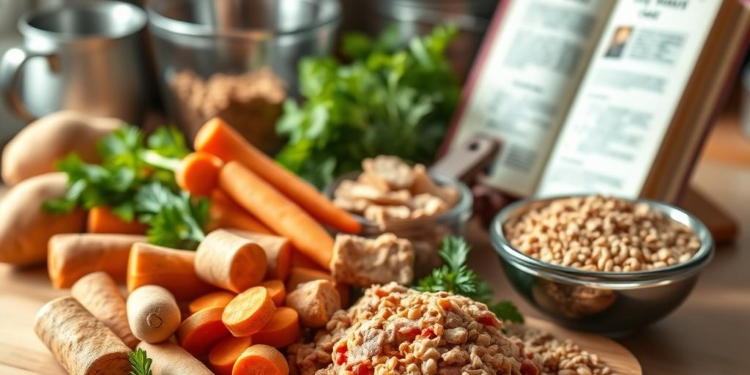






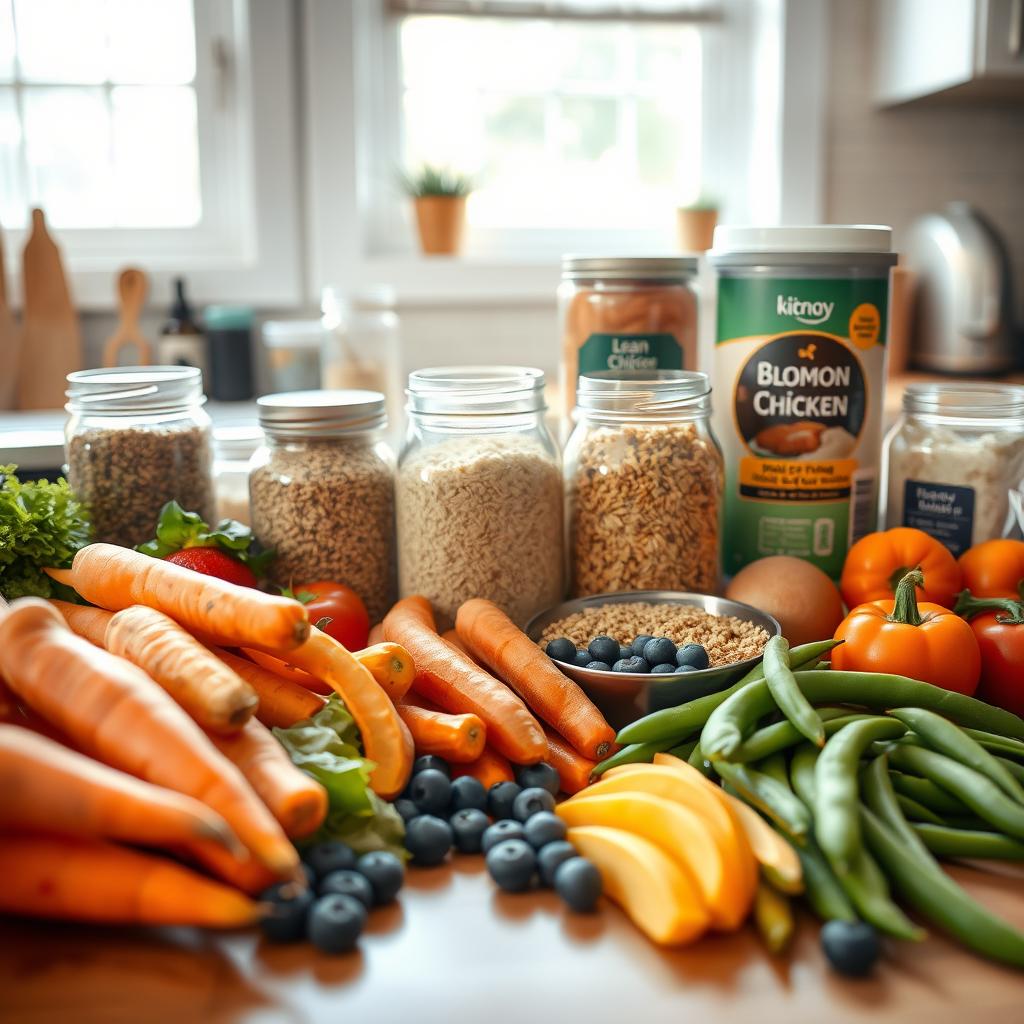

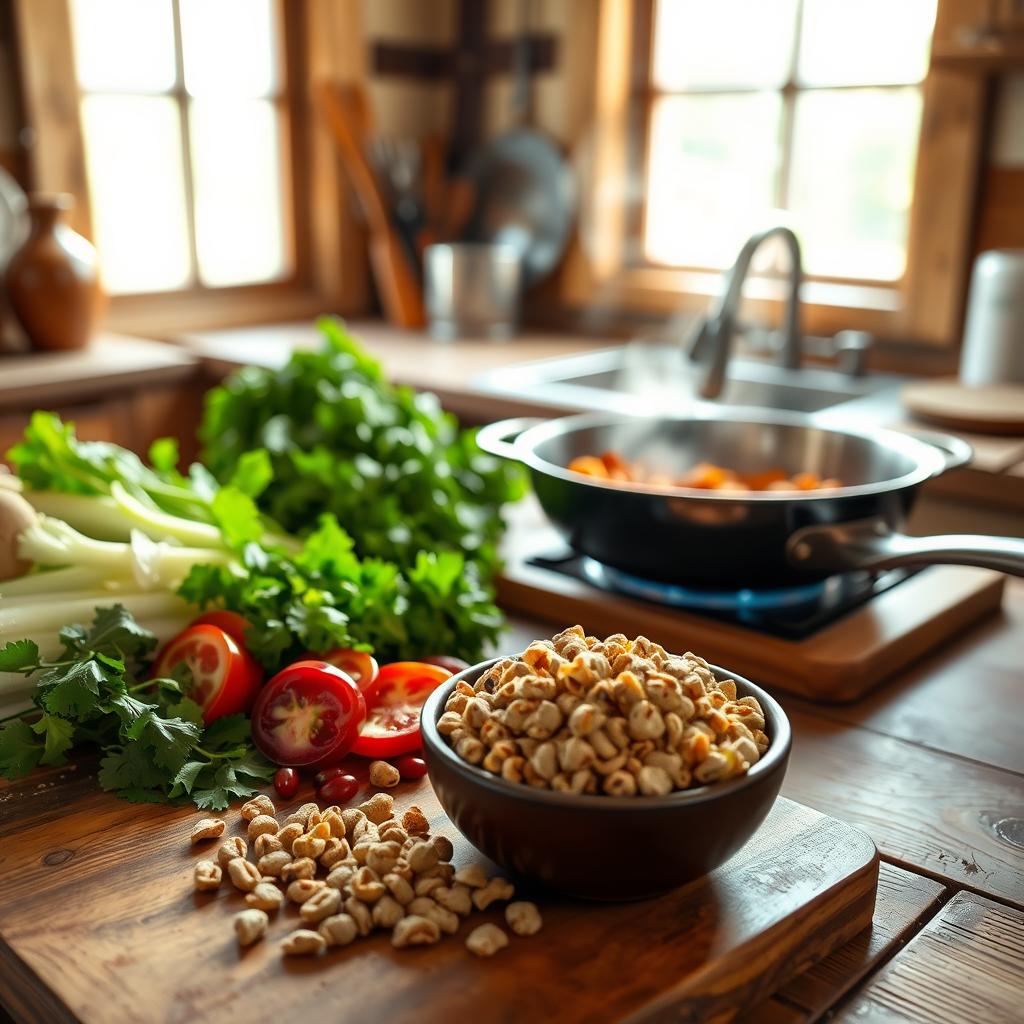


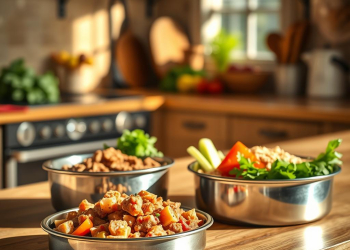
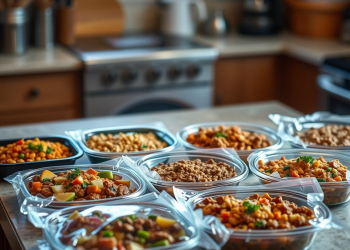
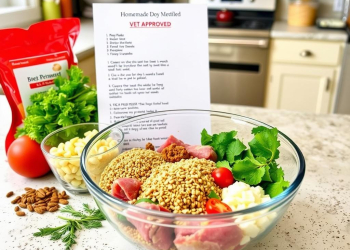











Discussion about this post